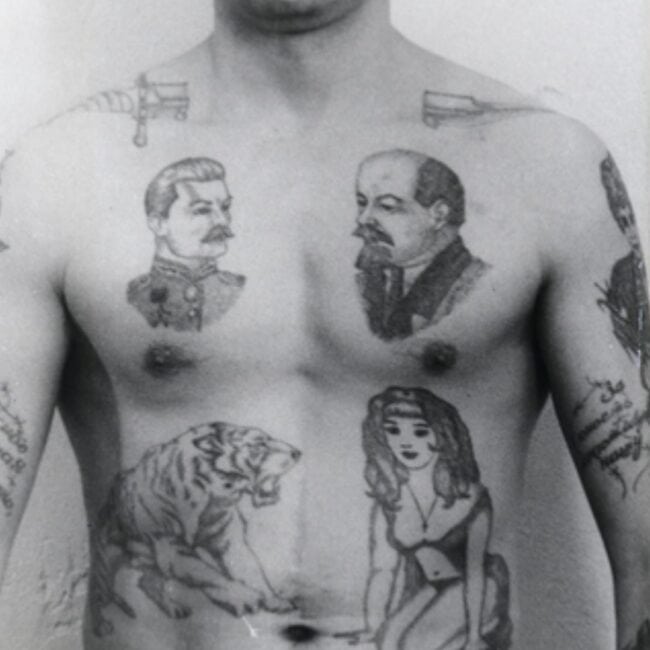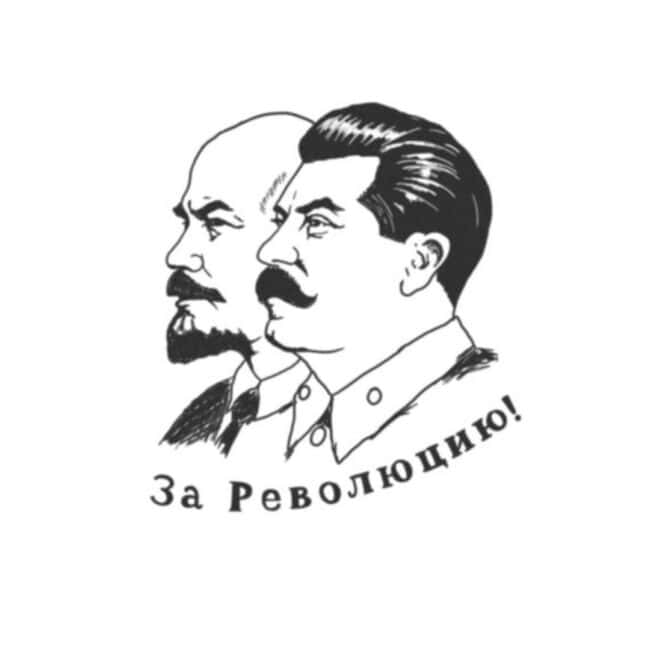Decoded Russian Prison Tattoos: Their Symbols and Stories
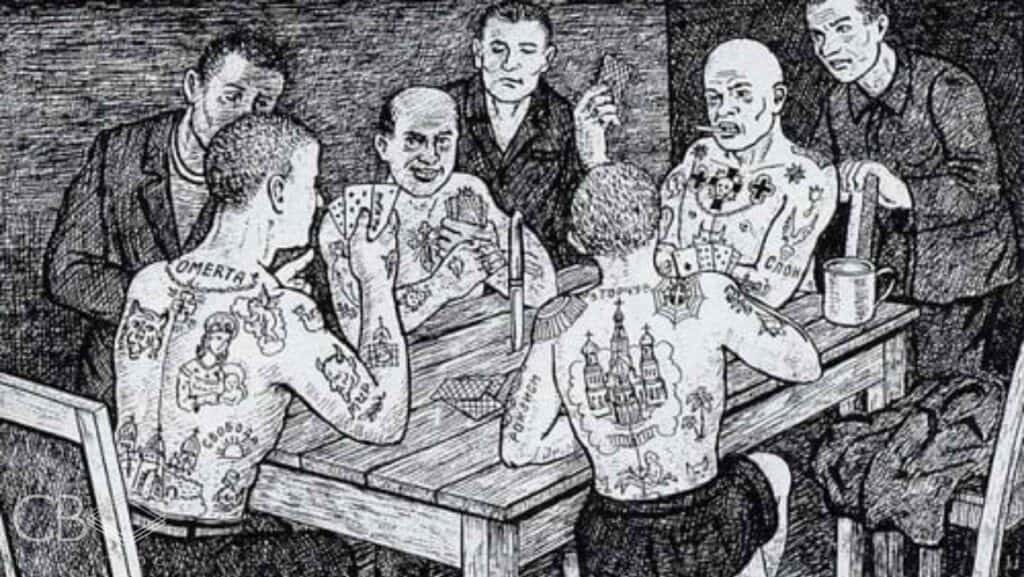
During the Soviet era, Russian prisons were controlled by a powerful criminal organisation known as the Thieves in Law, or vory v zakone. These professional criminals followed a strict code of conduct called the Vorovskoy Zakon, or “thieves’ law,” which dictated every aspect of their behaviour, including the tattoos they could wear. These tattoos were not just decorative; they served as a visual code that marked rank, crimes, and allegiance within the rigid hierarchy of the prison system. Breaking the code could result in severe punishment, even death.
Russian prison tattoos, often created in harsh conditions with makeshift tools, tell stories of power, identity, and survival. In this article, we decode some of the most common symbols and the narratives they hold.
The Star: Authority and Power
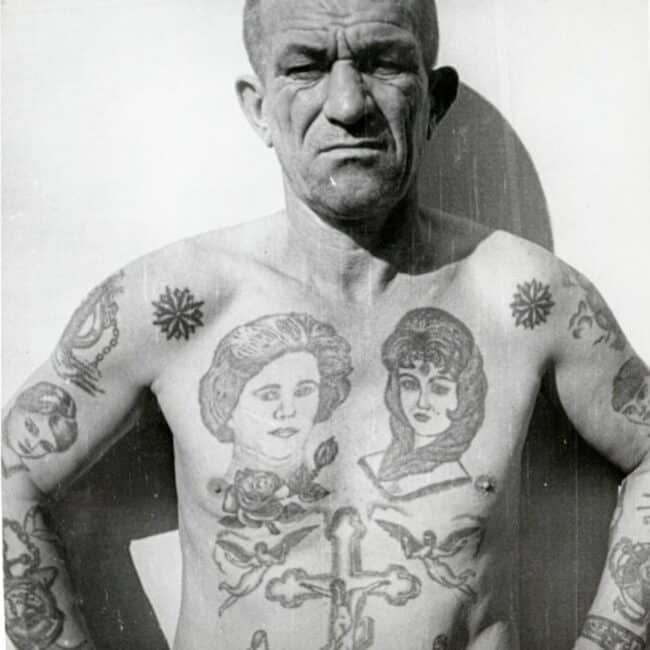
One of the most recognisable symbols in Russian prison tattoos is the star, often inked on the shoulders or knees. A star on the shoulders signifies high rank within the criminal hierarchy, marking the wearer as someone who commands respect. Stars on the knees carry a defiant message: “I bow to no one.” These tattoos are reserved for elite criminals, and wearing them without earning the rank can result in severe punishment.
The Cathedral: Time Served

Tattoos of cathedrals, often with domes, represent the number of prison sentences a person has served. Each dome corresponds to a term in prison. These tattoos are typically found on the chest and signify a life deeply entrenched in the criminal world. The detailed artistry of these tattoos showcases the skill of prison tattooists and the importance of storytelling in ink.
The Eyes: Watching and Warning
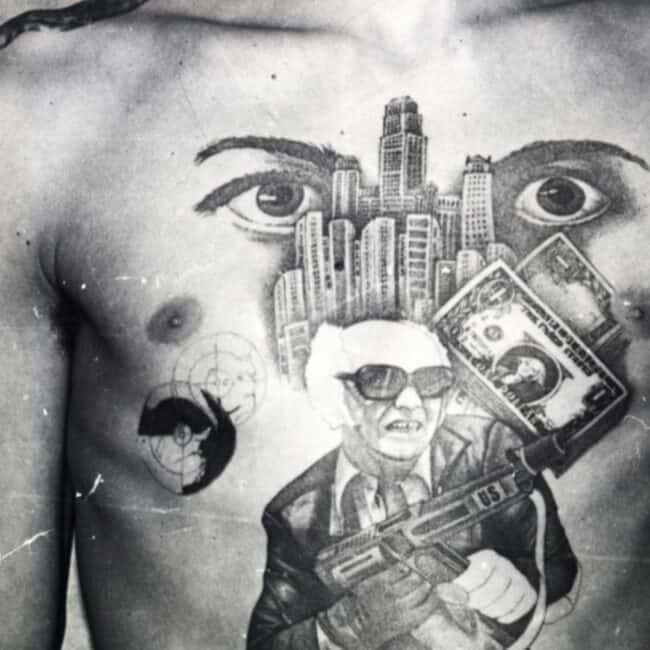
Eyes tattooed on the chest or above the waist convey a message of vigilance. For men, this tattoo often means “I’m watching you,” serving as a warning to others. For women, eyes tattooed on the lower abdomen can indicate coercion or exploitation, marking a tragic aspect of prison life.
The Spider and Web: Addiction and Entrapment
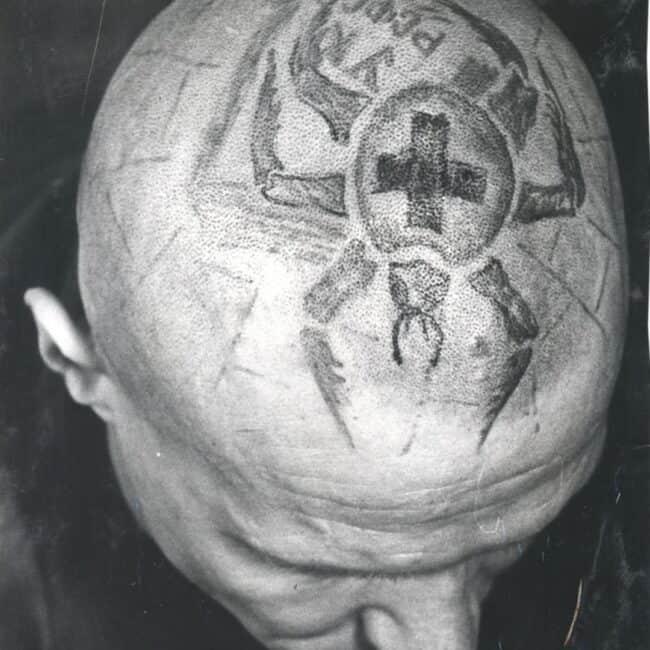
The spider and its web are common motifs in Russian prison tattoos. A spider crawling upward signifies a criminal climbing the ranks, while a spider in a web can symbolise someone who is trapped in a cycle of addiction or criminal behaviour. These tattoos often carry dual meanings, representing both personal struggles and societal roles.
The Cross: Faith and Suffering
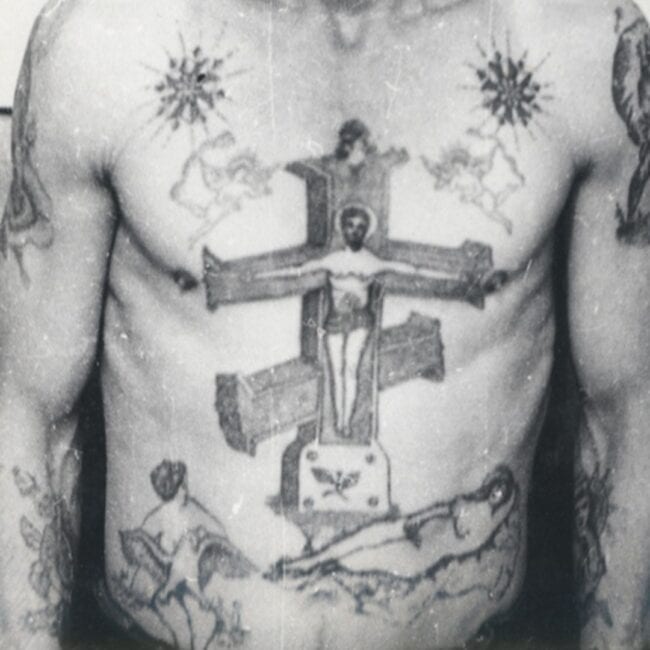
Crosses are frequently found in Russian prison tattoos, with varying meanings depending on their placement and style. A large cross on the chest often signifies a “Prince of Thieves,” a high-ranking figure in the criminal underworld. Smaller crosses can represent religious devotion, a source of solace in the bleak conditions of prison life.
The Skull and Crossbones: Life Sentence and Defiance
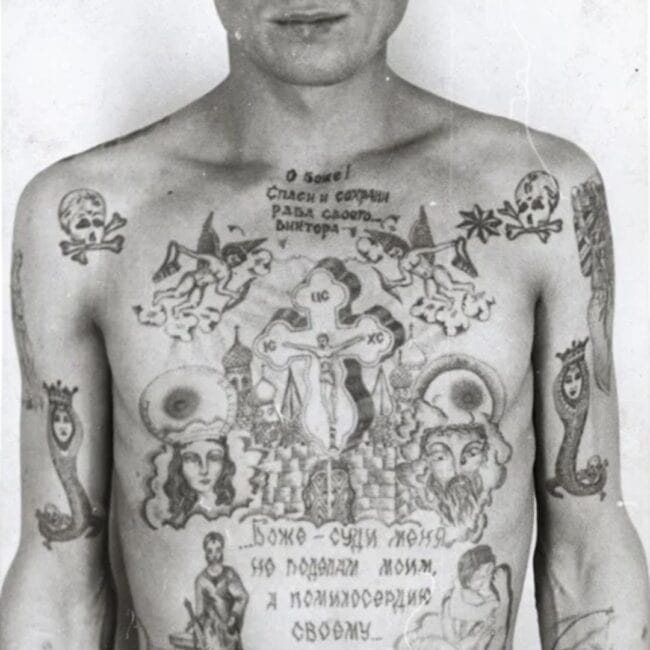
In Russian prison tattoos, the skull and crossbones hold a specific and intimidating meaning: they denote that the wearer is serving a life sentence. This tattoo is a stark declaration of the prisoner’s status, often symbolising defiance and an unbreakable connection to the criminal world. The placement of this tattoo, frequently on the chest, ensures that its message is clear and impossible to ignore. It marks the wearer as someone deeply entrenched in the penal system, with little hope or intention of reintegrating into society.
Epaulettes: Criminal Rank
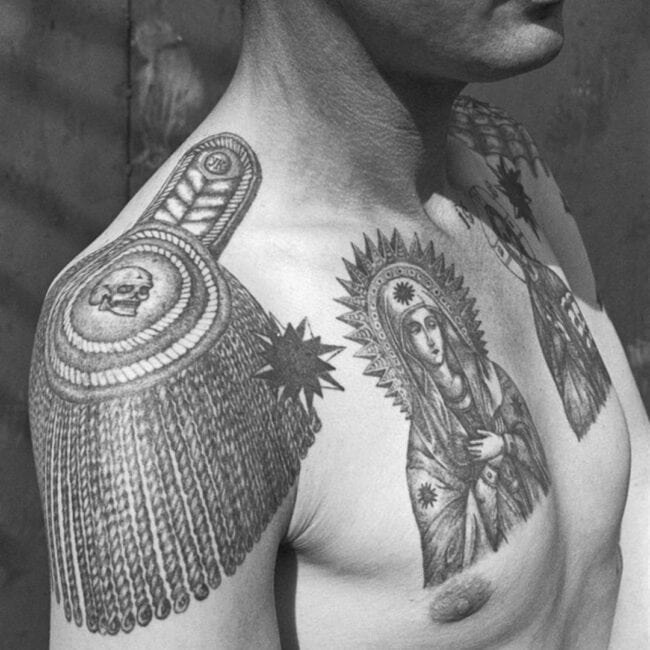
Epaulette tattoos mimic the insignias worn by military officers, but in the Russian prison system, they signify rank within the criminal hierarchy. These tattoos are earned, not given, and wearing them falsely can lead to severe consequences. They are a visual representation of authority and respect in a rigid social structure.
The Barbed Wire: Imprisonment and Isolation
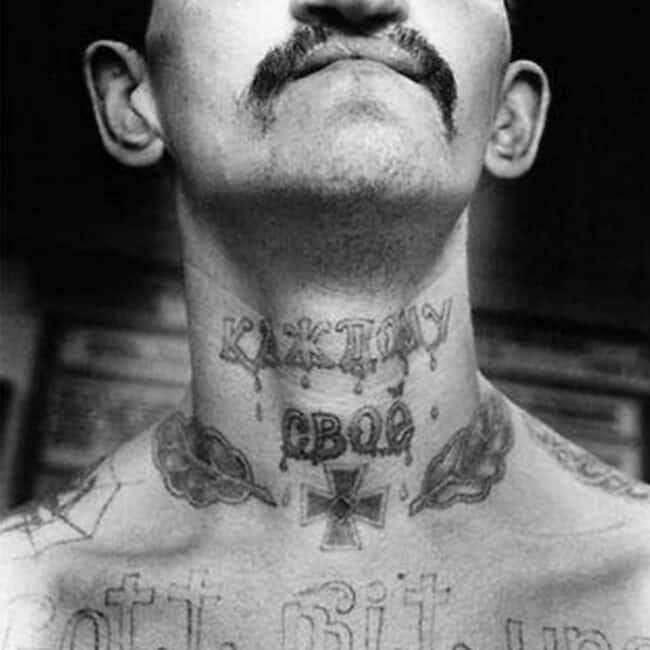
Barbed wire is a powerful symbol in Russian prison tattoos, often inked on the forehead or arms. It represents a life sentence or a deep connection to the penal system. Barbed wire across the forehead is a stark declaration: the wearer has spent a significant portion of their life behind bars and is unlikely to reintegrate into society.
The Dagger: Violence and Retribution

A dagger tattoo, often on the neck, symbolises a readiness for violence and a commitment to the criminal code. It can also indicate that the wearer has taken a life, serving as both a warning and a badge of honour. The neck placement ensures the tattoo is highly visible, reinforcing its intimidating message.
Stars on Knees: Defiance and Rank

Stars tattooed on the knees are a powerful statement in Russian prison culture, symbolising that the wearer bows to no one. These tattoos are reserved for those who hold a high status within the criminal hierarchy, earned through respect and authority. Wearing these stars falsely can result in severe punishment, making them a mark of authenticity and defiance. The placement of the stars reinforces their meaning, declaring the wearer’s refusal to submit to authority, whether inside or outside the prison walls.
Lenin and Stalin Tattoos: Symbols of Power and Protection
Lenin is often regarded by criminals as a symbolic “pakhan” (boss) of the Communist Party. Tattoos of Lenin, and sometimes Stalin, often carried double meanings. The letters “BOP”, which sometimes appear under portraits of Lenin, are an acronym for “Leader of the October Revolution” but also spell the Russian word vor (“thief”). While these tattoos could show patriotic loyalty, some prisoners had portraits of Lenin or Stalin tattooed on their chests for a pragmatic reason—a widespread belief that guards would hesitate to shoot an image of their great leaders.
Snake Tattoos: Addiction and Struggle
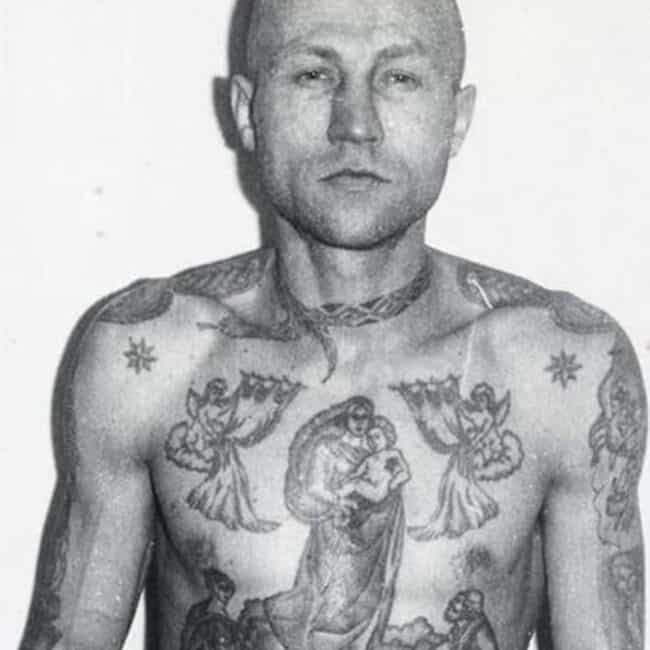
A snake tattoo in Russian prison culture often represents addiction and the struggles tied to substance abuse. When inked around the neck, it symbolises a person’s entrapment in a cycle of addiction, whether through alcohol or narcotics. Many prisoners bearing these tattoos were involved in crimes committed under the influence, marking the tattoo as both a personal and societal statement about the hardships of their lives.
These tattoos are not just inked onto skin; they are etched into the identities of those who wear them, marking their place in a rigid and unforgiving hierarchy.
While Russian prison tattoos have a rich and complex history, your tattoo can tell a story that’s entirely your own. At CB Ink, our talented artists are ready to help you create a design that reflects your unique journey. Whether you’re drawn to intricate symbolism or bold statements, we’ll help bring your vision to life.
Book your appointment today and make your mark with CB Ink.
If you still have some questions or concerns, feel free to send us a message and we’ll be glad to help!
